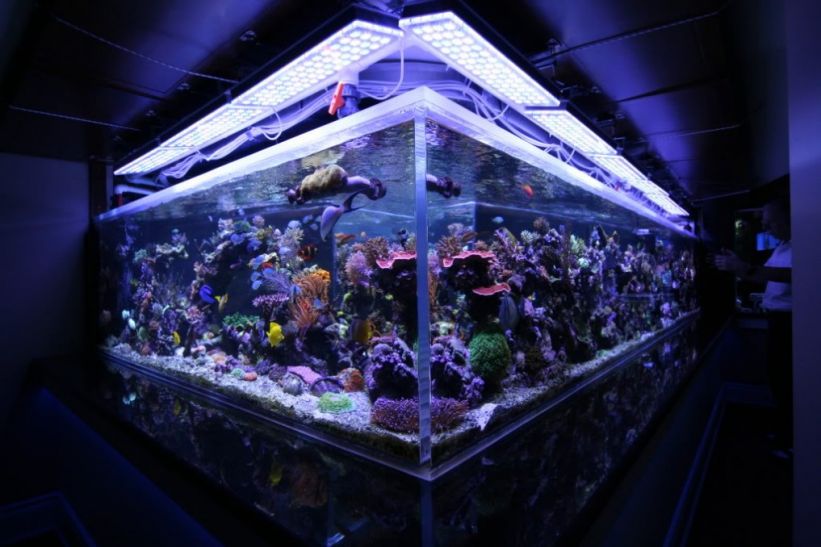When it comes to aquarium lighting, believe it or not, you can have too much. Corals can only use so much light before the intensity starts to inhibit photosynthesis, called photo-inhibition, causing the corals to bleach and die. This can also occur in other photosynthetic organisms, such as Tridacnid clams and other invertebrates. In any situation, the light is just too intense and the hardware either needs to be adjusted (intensity, position over the aquarium, etc.) or replaced with a much less intense source.
Many inexperienced hobbyists have this notion that you need to have a ton of light for a successful reef aquarium. This comes from a long history of inefficient lighting that plagued the aquarium industry for decades, namely compact fluorescent lighting that was all too common. As lighting has become more efficient in terms of lumens per watt, light spread, and depth penetration, our aquariums actually need less of the hardware than in years past.
This is sort of a concept many people aren’t comfortable with. Think about it, a six foot long aquarium has always required three sets of metal halides, one covering a two foot section. But there are many fixtures out there that can efficiently cover a larger footprint, to the point that if you raise a light high enough over an aquarium, you can get away with just a couple of fixtures while still providing all of the coverage you need.
LED lighting has come a long way in that department, and many of them have to be dialed back just to keep corals from bleaching. It’s not uncommon to hear about aquarists running their lights at 70% intensity, or 50%, or even less depending on their results. Our tanks just don’t need light that pegs our a PAR meter. Most of our livestock can thrive in fairly dim aquariums, hence the reason why T5HO lighting was so popular for so long. Please note that the term “dim” is extremely relative in this case.





